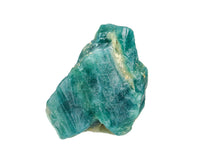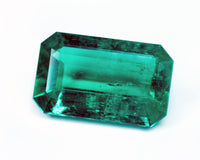- 1. February Birthstone
- 2. Amethyst Significance
- 3. February Birthstone, Amethyst Properties
- 4. Types of Amethyst and Their Properties
- 4-1. Chevron Amethyst
- 4-2. Ametrine
- 4-3. Prasiolite/ Amegreen (Green amethyst)
- 4-4. Amethyst Cacoxenite
- 4-5. Rutile amethyst (Super seven quartz)
- 4-6. Brandberg amethyst
- 4-7. Black Amethyst
- 4-8. Valuable Varieties of Gemstone Amethyst
- 5. February Birthstones, Amethyst for sale
February Birthstone : Amethyst
February is the coldest of winter months. The stone representing this month has to match. Indeed, amethyst, a February birthstone, looks like a bizarre shard of ice. Its icy appearance ideally resonates with the Water Element, i.e. Aquarius and Pisces. Those born under these astrological signs can benefit from the spectacular beauty of the purple stone combined with its powerful healing and metaphysical properties.
Amethyst Birthstone Significance
February birthstone, amethyst is the most valuable type of quartz, the second most abundant mineral in the world. Archaeological excavations show that people have been using it since the Neolithic era.

From time immemorial, amethyst was considered a protector from alcohol addiction. Its very name speaks of this mission. From Greek, amethystos translates as non-drunk or not intoxicating. Ancient Greeks and Romans relied on bowls embellished with amethysts to keep their mind clear at feasts.
The stone was well-known in Ancient Egypt. According to legends, Cleopatra had a signet ring adorned with amethyst. The stone featured an engraving of Mithra, a Persian deity that symbolizes light and life.
February Birthstone, amethyst was praised by Leonardo Da Vinci himself. The greatest renaissance figure noted its ability to keep thoughts sharp and clear.
February Birthstone, Amethyst Properties
February birthstone, amethyst is one of the varieties of silicon dioxide (SiO2) aka quartz. In nature, it occurs as transparent or translucent crystalline formations or druses. The color of the gem ranges from gentle lavender to vibrant purple and it depends on iron inclusions. Due to the unique layered crystal structure, very few amethysts are uniform in color. More often than not, they have red or blue undertones. The color of the February birthstone is fully revealed when it is exposed to sunlight. Brilliant and vibrant, amethyst is rightfully catnip for gemstone connoisseurs.
Amethysts are very sensitive to heat. The stone can lose its color in high temperatures. At 200°C, amethyst turns pale but can restore its color when cools down. At 300-500 °C, it loses its color irrevocably. When being heated up to 600 °C, amethyst becomes bright yellow to mimic citrine.
Types of Amethyst, February Birthstone and Their Properties
Natural amethyst comes in a large variety of colors. Some specimens demonstrate beautiful inclusions and patterns created by a symbiosis of two and more minerals.
Chevron Amethyst

Chevron is a stunning variety of the gem that alternates V-shaped layers of purple amethyst and milky-white quartz. Chevron is not valued as a gemstone but it is a gorgeous choice for jewelry and talismans. Providing strong spiritual vibrations, it has a calming and stress-relieving effect. Chevron amethyst is often used in meditation. Among those who practice meditation, it is known as Ascension Stone.
Ametrine

Ametrine creatively blends purple crystals of amethyst with yellow citrine. Unevenly distributed, transparent areas of purple and yellow provide a truly magnetizing spectacle. The two-colored variety of amethyst promotes mental health, ensures spiritual curing, and gives a nudge of creativity. Besides that, it reinforces willpower and helps quit addictions. Since ametrine features two minerals, it represents the unity of male and female energies. The stone’s alternative name is bolivianite because the largest deposit of this gemstone is located in Bolivia.
Prasiolite/ Amegreen (Green amethyst)

Prasiolite is a green variety of amethyst. Its name comes from the Greek word for onion. Prasiolite does not occur in nature, it is heat-treated amethyst or citrine. After heating, the gems become transparent, and their colors vary from light green to yellowish-green. Another green variety of amethyst is amegreen. Unlike prasiolite, these stones are opaque. Green gemstones are highly valued for their calming properties. On top of that, they accelerate physical and spiritual healing.
Amethyst Cacoxenite

Sometimes, amethyst crystals carry blotches of another mineral, cacoxenite. Cacoxenite is notorious for decreasing the quality of iron ore; hence it was a bad sign if it was found in iron deposits. Even its very name emits negativity: it is comprised of the Greek words ‘kakos’ meaning bad and ‘xenos’ standing for guest. However, when combined with amethyst, cacoxinite is more than welcome. The most spectacular color of cacoxenite is golden, although there are also yellowish, reddish, brownish, orange, and greenish varieties. Cacoxenite inclusions have a form of crystalline aggregates of a radial structure, fibers, or brushes. They give a special charm to amethyst.
Rutile amethyst (Super seven quartz)

This rare type of amethyst contains inclusions of quartz and goethite. Clusters of golden filaments housed in clear purple stones resemble sea creatures. It’s clear why rutile amethyst is incredibly sought-after among gemstone enthusiasts and those looking for talismans. The stone is so unique that people made legends about its origin and properties. One of these legends says that rutile amethyst is able to fulfill wishes.
Brandberg amethyst

This mineral blends crystals of amethyst and smoky quartz. The most valuable specimens display organic inclusions such as insects or pieces of plants. Brandberg is credited with incredible healing properties and is considered a powerful talisman that protects against the evil eye.
Black Amethyst

Unlike other varieties of amethyst, its surface is covered with crystal ‘thorns’. They occur because the gems are formed in rock strata at great depths. Black amethyst is extremely hard to come by and currently, it is found in a single deposit field in Uruguay. If you are lucky to get your hands on black amethyst, you can benefit from its protective and chakra-enhancing properties.
Valuable Varieties of Gemstone Amethyst
Some gem-quality amethysts obtained their own trading names. The most sought-after are Deep Siberian amethysts known for their rich purple hues with a touch of blue. Despite the name, the mineral isn’t mined exclusively in Russia. Its deposits are also found in South America, Africa, and Sri Lanka.
Rose de France amethysts display gentle hues. They are light, almost transparent, and have a delicate lavender luster. In bright light, the stone acquires amazing light lilac tints.
February Birthstones, Amethyst for sale from KenKenGems
February Birthstone, amethyst conveys royal grace and nobility. Without a speck of doubt, it is able to steal the show when adorning your jewelry. Find the largest selection of amethyst in KenKenGems catalog. Not only amethysts but we also deliver ametrine, amethyst druses, cacoxenite in amethyst, and much more. No matter which gemstone captures your attention, we guarantee superlative quality and very affordable prices.





